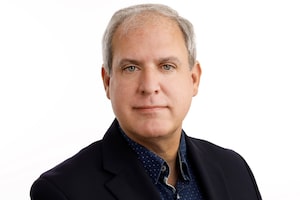Michael Sabia, chief executive officer of Caisse de Depot et Placement du Quebec, in Toronto, Jan. 10, 2018.CHRIS HELGREN/Reuters
Justin Trudeau has brought in Michael Sabia as economic czar with a mission to improve growth. But let’s hope Mr. Sabia brings the policies with him. The Liberal growth plans are looking a little tired.
Mr. Sabia is the high-profile former CEO recruited to become deputy minister of finance with the implicit promise that he’ll be a key architect of economic policy.
That’s an odd thing in Canadian government circles, because bureaucrats are supposed to implement the government’s economic program, not dream it up. The Prime Minister’s Office is usually wrangling with the finance minister for control, not giving it away.
The trouble is, the Liberals are running low on economic-growth policies. Or at least the ones they came to power with in 2015 – expanding infrastructure spending and incubating innovation – are pretty worn.
That’s an even bigger issue because the next big thing on the agenda, according to Finance Minister Chrystia Freeland’s Nov. 30 economic statement, is a shorter-term plan to stimulate the economy with $70-billion to $100-billion in spending over three years. You would want that to spur lasting growth.
Certainly, you would expect Mr. Sabia to want that. He told The Globe and Mail in an interview last week that his overarching goal is to get Canada on “a better growth trajectory.”
If you think back five years, that’s what Justin Trudeau campaigned on when he first ran for prime minister in 2015. He said he’d do it by expanding infrastructure spending and seeding innovation, in part by funding growth in strategically-chosen industrial clusters.
Implementing those ideas in the real world turned out to be tougher.
Infrastructure spending means planning complicated projects, especially if you want to build smart, growth-inducing things rather than hockey rinks. You have to consult and plan. The Liberal government hasn’t been able to spend the infrastructure money it budgeted. It takes time to ramp up infrastructure programs.
Innovation was a Liberal-government buzzword in 2015, too, but Parliamentary Budget Officer Yves Giroux reported in October the Liberals have so far only handed out $30-million, a fraction of the $918-million pledged for five “superclusters” – and Mr. Giroux was skeptical the superclusters would create all the promised jobs.
So what does Mr. Sabia have in mind for growth? Well, he’s a believer in innovation, he told The Globe. The former CEO of BCE Inc. and the Caisse de dépot et placement du Québec also had a brief stint as chair of the Canada Infrastructure Bank. Is he in Ottawa to do innovation and infrastructure, but better?
Ms. Freeland’s plans appear to include expanding access to child care, which, as Quebec’s experience shows, encourages women’s participation in the labour force and boosts the economy over the long term.
But Mr. Sabia’s first order of business is the $70-billion to $100-billion stimulus plan for the spring budget. Ms. Freeland said it would be “time-limited,” so it is supposed to roll out quickly and stop in three years. Liberal innovation programs haven’t worked that way. Infrastructure programs just won’t.
What’s more, the standard recipe for stimulus programs doesn’t fit this particular recession, McGill University economist Chris Ragan said. Often, they include infrastructure projects, which are slow, or sending money to households, which is faster but not as good at improving growth.
Mr. Ragan noted Ottawa has sent a lot of money to households over the pandemic, not as stimulus to get the economy to produce more, but as relief so people can stay home and not produce. People used a fair chunk of it to pay down debt or save up. Sending out bigger cheques isn’t going to provide bang-for-the-bucks, he said.
The pandemic has hurt a lot of businesses, notably restaurants and retail stores, but not always the ones that get the most oomph from traditional stimulus. Programs to encourage home retrofits or building might raise wages for workers in a construction industry that has done pretty well, without doing much for growth, Mr. Ragan said.
So what exactly can the government do that gets the economy rolling fast, heals those that are really ailing, and get Canada on Mr. Sabia’s better growth trajectory? The elected Liberal government doesn’t seem to have a lot of ideas for that. They’ve taken the unusual step of recruiting a big-gun bureaucrat – and it looks like they’re counting on him to do a little magic.
Know what is happening in the halls of power with the day’s top political headlines and commentary as selected by Globe editors (subscribers only). Sign up today.
 Campbell Clark
Campbell Clark